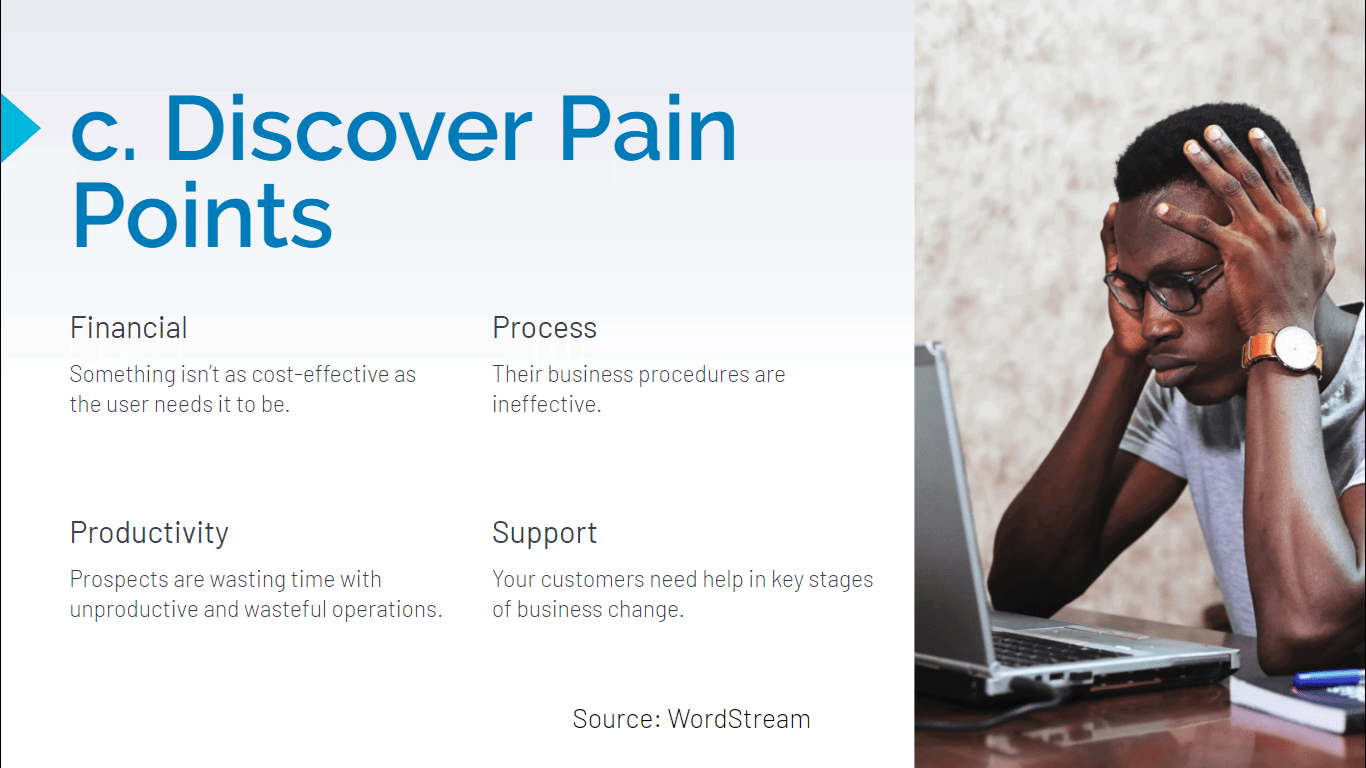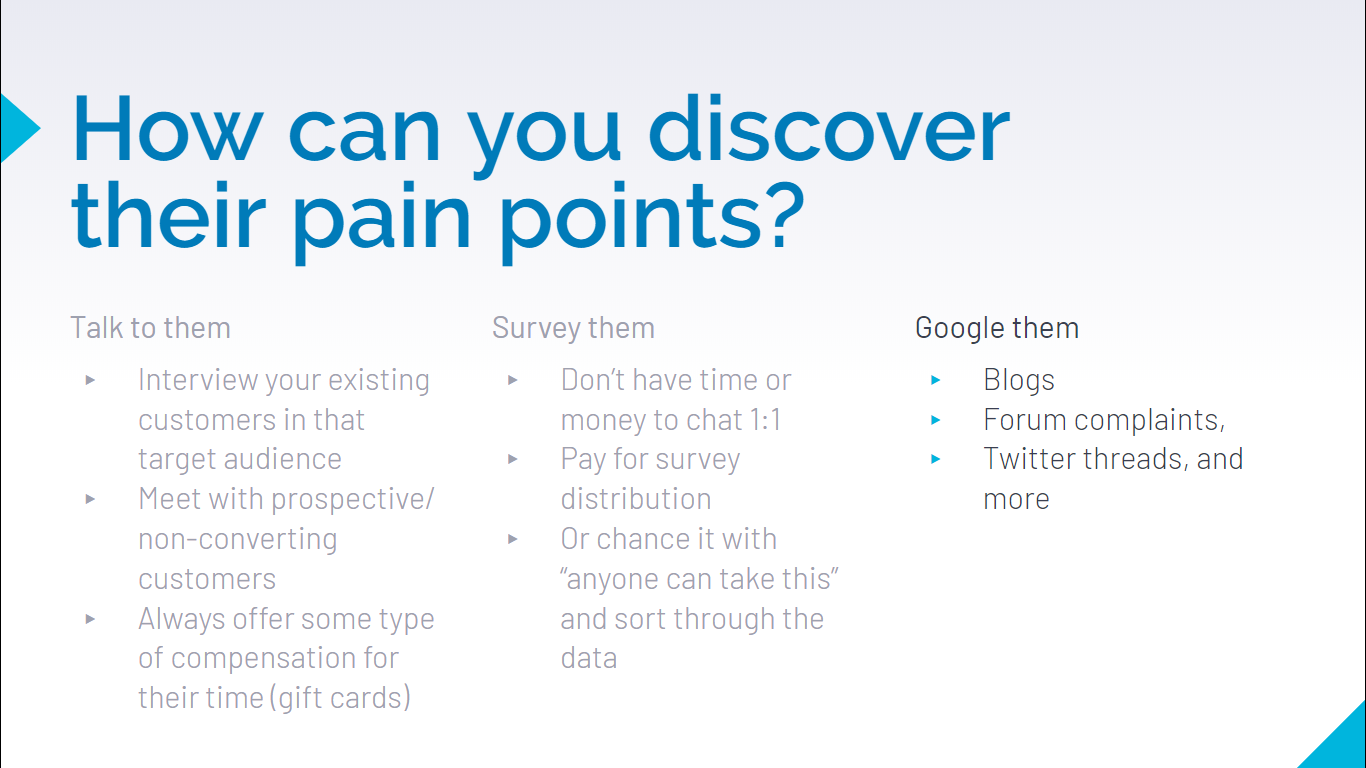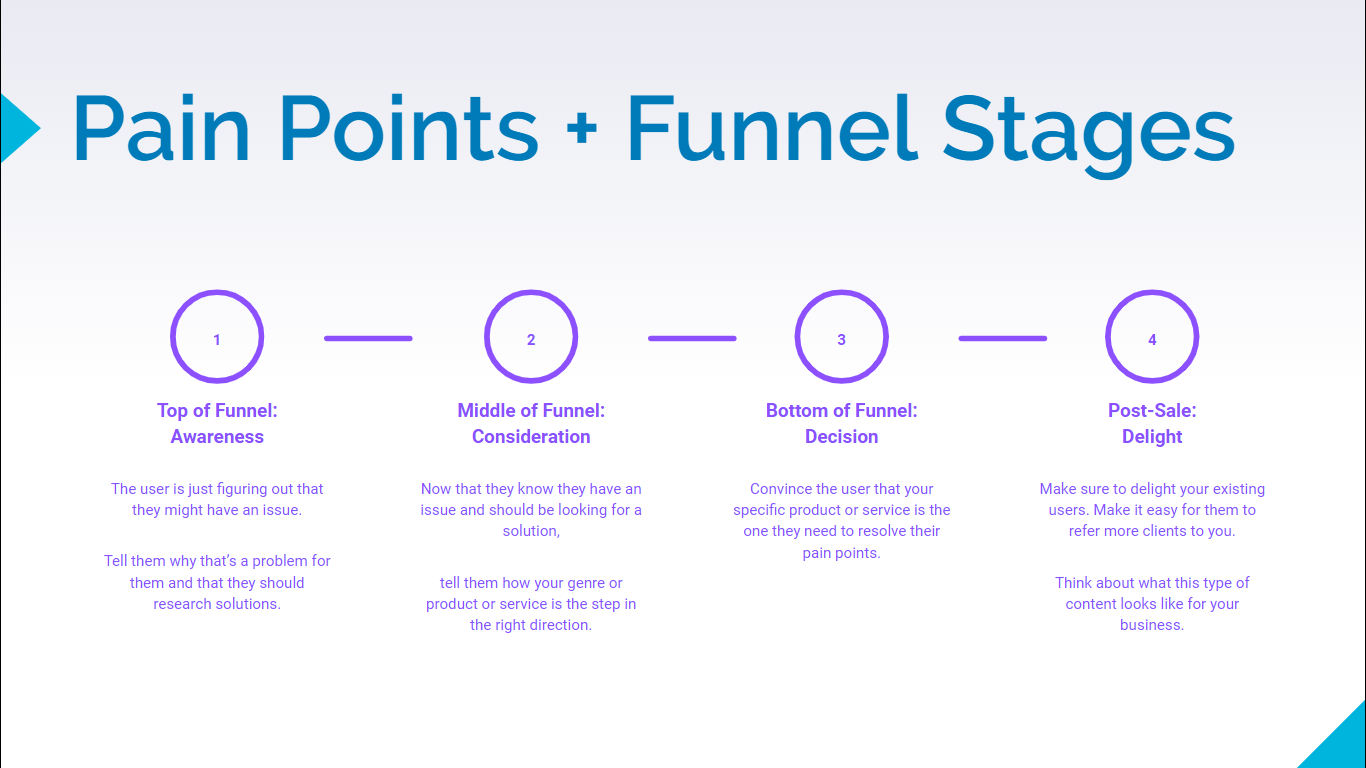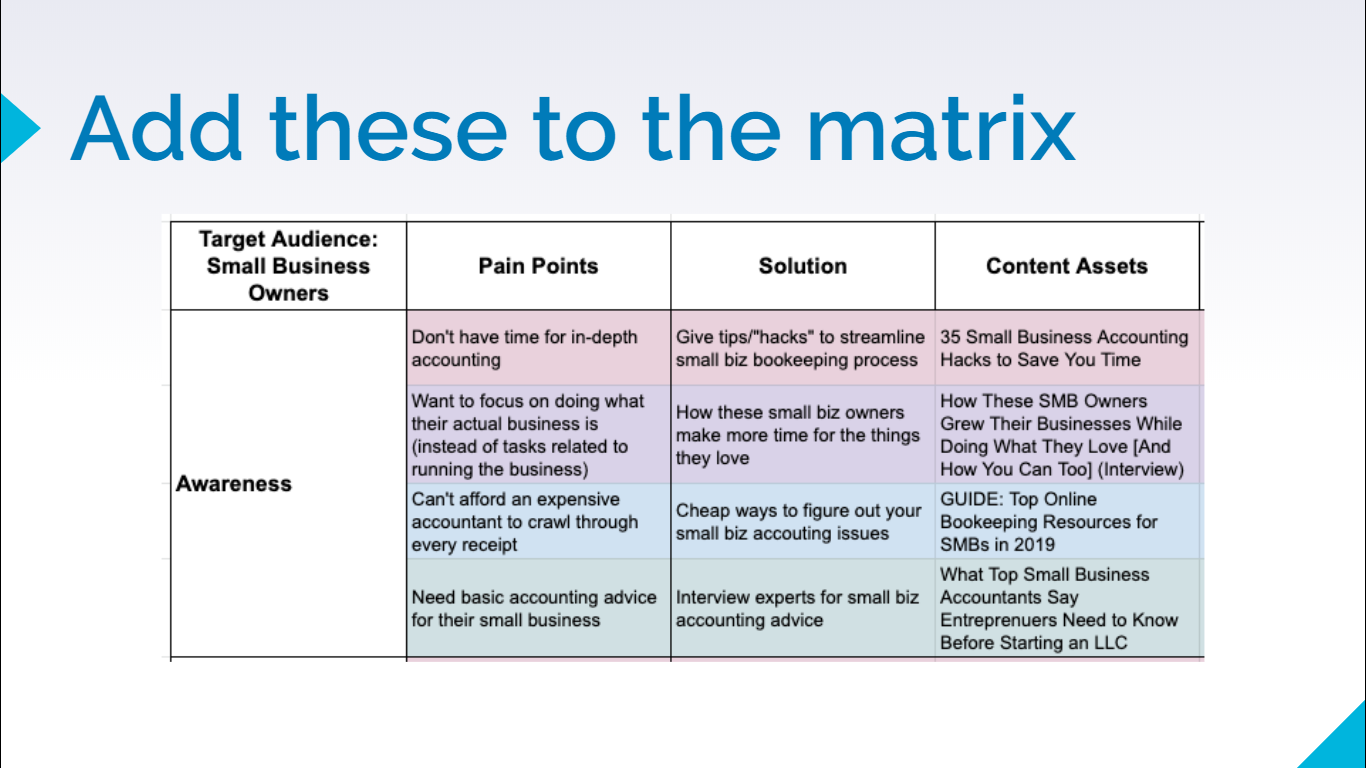Start Exploring Keyword Ideas
Use Serpstat to find the best keywords for your website
how to DRIVE MORE CONVERSIONS WITH A USER-FOCUSED TOPIC MATRIX with
carolyn lyden
carolyn lyden

My company is called Search Hermit - because my goal is to help businesses come out of their shells and get found online.
the Idea of content matrix
This matrix was borne of that discussions, and I've been tweaking it and adding on to it since then.
The idea of using the content matrix, though, is threefold:
- Drive more traffic to your site.
- Move that traffic further along in the funnel through micro-conversions.
- All by doing what marketers should be doing since the inception of inbound marketing--serving the needs of our users and clients.
What is a topic cluster?
The problem with topic clusters
Topic clusters work well for search engines… Because they ensure internal linking, they make sure everything's cohesive, we just assume that it's structured well so USERS can also find what they need.
However, the actual process of navigating a topic cluster isn't always a great user experience for real, non-robot humans. As marketers, in the process of optimizing for what works well for search engines, we often become detached from our target audiences.
And we end up optimizing our sites for us, people like us, and what we think our target audience wants. Which is what Michael Aagaard, Conversion Rate Optimization Consultant calls, "the imaginary audience." Or as I like to say, "Oops! We optimized for ourselves!"
In an article about confirmation bias in marketing, Aagaard talks about how it's actually REALLY common for marketers to create content and format our websites for ourselves and what we assume our target audiences want. And that's not always true.
the right focus
This is all about creating BENEFIT-focused copy. Features are just a slice of business functionality that has a corresponding benefit or set of benefits for that product's end user. The benefit is the VALUE those features bring to your customers.
One of the easiest ways to break this down is to think of the features on your face. You have eyes, a nose, a mouth. But if you were to market this face, you wouldn't just say, "Comes with deep brown eyes, a functioning nose, and a mouth with teeth!" You'd tell your audience what those features can do for them--and how their lives would be better by having them.
You can see your favorite foods being prepared by a family you love, you can smell how delicious your favorite thanksgiving side is, and you can taste the magnificent feast before you next week at this time.
One sounds A LOT more appealing than the other.
The User-Focused Content Matrix
But it's important to tie your content to metrics. If you're creating content with no goal in mind, you're wasting YOUR time and your users' time. With tools like Google Analytics, you can easily tell how many people are coming to each of these pieces of content, flowing to the next stage of the funnel, and converting from the CTAs on your Bottom of Funnel content pieces.
In today's imaginary scenario, I've created this matrix for an accounting software company. And their Q1 2020 goal is to drive more subscriptions to their small business accounting software.
For our accounting software, we're choosing the Target Audience of small businesses and entrepreneurs and discover their pain points.
What is a pain point and how to discover it?
According to WordStream, there are 4 main types of pain points:

There are 3 main ways:
- you can ask existing customers about their journey and why they chose you;
- you can talk to prospects who didn't convert about why they didn't;
- always offer them something small for their time.

Some clients may have all or just one of the pain points, some may be at the top or bottom of the funnel, so it's crucial to cover all your bases.
This means STOP FORCING PEOPLE DOWN THE FUNNEL. There's nothing worse than looking for general information on something and feeling like you're being forced to buy before you're ready.
Pain Points + Funnel Stages

1. So I've discovered what are the pain points for my small business customer.
2. I found a solution that corresponds with the stage of the funnel.
3. And so I create a piece of content that answers each pain point at the top of funnel, middle of funnel, and bottom of the funnel.
Once you have the pain points, solutions, and content assets mapped out for each stage of the funnel, it'll be easy to see what calls to action you need to use to move your audience from one stage to the next for each specific issue.

Don't skip ahead and try to get people to buy before they know what they're buying. Once your reader has converted into a customer, the Delight phase of content gives them tools to actually iron out those pain points with your solution.
Make them happy, and your next call-to-action is to ask for reviews!
I created the matrix. Now what?
Speed up your search marketing growth with Serpstat!
Keyword and backlink opportunities, competitors' online strategy, daily rankings and SEO-related issues.
A pack of tools for reducing your time on SEO tasks.
Discover More SEO Tools
Text Analysis Tool
Unlock the power of your text data with our advanced Text Analytics Tools
AI Content Detection
Ai Content Checker – realize if the text is AI-generated
AI Text Generator
Try our AI Content Writer tool and streamline your content creation process
AI Content Tools
AI Content Marketing Tools – simplify and optimize the content creation process
Recommended posts
Cases, life hacks, researches, and useful articles
Don’t you have time to follow the news? No worries! Our editor will choose articles that will definitely help you with your work. Join our cozy community :)
By clicking the button, you agree to our privacy policy.
